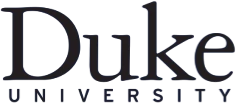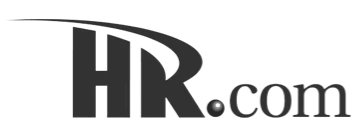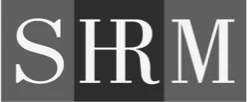Templates & GuidesDiversity & Inclusion
Protecting Diversity: A Practical Unconscious Bias Interview Guide
Download Template
Key Takeaways
Key takeaways unconscious bias leaders should keep top of mind as they read:
- Discover how a structured interview turns gut feelings into hard data
- See why inclusive job ads unlock hidden talent pools and how to write them without extra effort
- Explore how a mixed interview panel spots blind spots that a single interviewer might miss
- Learn how regular training and simple metrics catch problems before they grow
Every hiring decision shapes an organization’s future. Yet even experienced leaders can slip when they rely on first impressions rather than evidence. Three out of four interviewers form a clear opinion about a candidate within the first five minutes and then spend the rest of the meeting searching for proof that their early verdict was right. Because every stage of the hiring process is vulnerable, vigilance is essential.
When that happens, skilled people are screened out, legal claims rise, and teams may miss out on recruiting candidates with fresh ideas. This guide explains why bias matters, shows the patterns that appear most often, and offers simple, repeatable steps any company can use to spot the best talent without slowing the process.
What Is Unconscious Bias?
Unconscious bias, sometimes called implicit bias, is an automatic preference or stereotype that acts faster than deliberate thought. Scientists estimate that our minds sift through eleven million bits of data each second but can focus on only fifty at a time. To bridge the gap, the brain builds shortcuts. These shortcuts are handy when you need to dodge traffic, yet risky when you weigh a person’s work skills.
Bias occurs at any point: a résumé from an elite suburb may look stronger than one from a rural town; a confident handshake can override solid technical answers. If leaders keep ignoring evidence, they end up favoring style over substance and creating hiring bias that harms company culture.
Why Bias Appears in Interviews
Job interviews can sometimes be a high-pressure environment forcing leadership to make quick calls. A sharp suit or a shared hometown sparks warmth in seconds; that early initial impression often sticks even when later facts may present an alternative image of the candidate.
Many interviewers carry existing beliefs, pre-existing beliefs, and preconceived notions about what a star performer “should” look like. If they picture an outgoing graduate from a global school, they may overlook a quieter applicant with richer code samples and more relevant experience. Tight calendars add stress: when back-to-back meetings pile up, decision-makers rush through the interview process and rely on gut feeling rather than measured comparison.
A Few Examples of Common Interview Biases
Several bias patterns surface during interviews in multiple industries. Affinity bias nudges us toward people from the same background. The halo effect lets one strong answer hide weak spots, while the horns effect lets one stumble poison the rest. Confirmation bias pushes us to gather remarks that prove our early hunch. Identity traps loom as well: gender bias may spark doubts about a woman’s travel schedule, and racial bias can prompt unfounded questions about tech skills.
These habits lead to unfair assessments that are assumptions-based and mean the résumé of one candidate can eclipse a better-qualified peer. The results ripple outward. Over time, managers hire look-alikes, and less diversity starves the firm of fresh insight. Without corrective steps to mitigate unconscious bias, even well-meaning teams repeat the cycle.
The Impact of Bias on Decision Making
Unconscious bias can significantly influence hiring decisions, often leading to unfair assessments and decisions that don’t accurately reflect a candidate’s qualifications or potential. Biased hiring processes can result in a less diverse workforce, excluding qualified candidates who would bring unique perspectives and skills to the organization.
Furthermore, unconscious bias can damage a company’s reputation, reduce employee morale, and limit its ability to innovate and compete in a diverse marketplace. To avoid these consequences, hiring managers must be aware of the different types of biases that can occur, such as confirmation bias, affinity bias, and the halo effect. By recognizing these biases, hiring managers can take steps to mitigate their impact and ensure fair hiring decisions. When two candidates with equal credentials receive different ratings because of accents or hobbies, the business loses out.
Risks of Bias in the Hiring Process
Unchecked bias carries high costs. The U.S. Equal Employment Opportunity Commission reports that nearly sixty percent of discrimination claims mention biased interviews. Discriminatory claims can lead to settlements that drain budgets and damage employer brands.
Bias also hurts performance. A global study links companies in the top quarter for gender and ethnic diversity to a thirty-five-percent jump in financial returns compared with their less diverse peers. When bias pushes diverse thinkers away, innovation is more likely to stall. Inside the firm, a narrow talent pool fuels collective thinking, dulls creativity, and leaves managers unprepared for shifting markets. By contrast, diverse teams broaden insight and speed problem-solving across functions.
Structuring interviews by standardizing questions can mitigate legal risks associated with unfair hiring practices. Talent surveys show that half of applicants turn down offers if they sense unfair treatment from interviewers or the broader organization.
Building Your Interview Guide
A single PDF will not cure unconscious bias in hiring, yet a living routine, tested often, will. This section walks through actions that HR team members, line leaders, and hiring teams can use to reduce bias and build trust.
Write Clear Job Descriptions
Carefully crafting the job description is crucial in the recruitment process. Clarity starts with the advertisement. When advertising a new position online or in print media, keep the following pointers in mind:
- Describe measurable outcomes rather than soft personality traits. Ask for “deliver monthly client reports” instead of “must be customer obsessed.”
- Use gender-neutral language by replacing “salesman” with “sales professional.”
- Disregard specific job descriptors with broader definitions, replacing “Python script coder” with terms like “experienced software engineer” instead.
- Avoiding prestige signals can also be helpful. For example, you may want to remove certain conditions from your listing like “graduate of a prestigious university”, unless the institute provides a unique qualification you are looking for.
- Finally, post openings on broad channels, industry boards, community groups, and internal networks, to widen the recruitment process and tap pools you may have missed.
Structure the Interview Process
Consistency anchors fairness. Draft the same questions in the same order, then rate replies on a one-to-five scale. These structured interviews turn instinct into numbers and reveal patterns that text notes miss. Mixed panels add multiple perspectives and cut single-view bias. After each session, interviewers record scores privately, compare outliers, and adjust wording when gaps stem from confusion rather than skill.
Standardization also tackles legal exposure. When all applicants face identical criteria, councils can defend choices with data if challenges arise.
Train and Support Decision Makers
People cannot drop biases they do not see. Quarterly workshops give teams the tools to detect hidden patterns. A good session is one that incorporates learning diversity: mixing short science briefs with simple practice rounds. Interviewers can watch a mock exchange, spot bias cues, and then discuss alternate responses.
By reviewing their own biases in a safe setting, staff learn to pause and ask, “Would I score that reply the same way if I did not share the characteristic mentioned?” Rotating panel partners across departments also exposes interviewers to different viewpoints and stops cliques from forming.
Track Outcomes
Data turns good intent into visible change. Start by recording pass-through rates for each interview stage. If women reach second-round interviews at the same rate as men but receive fewer offers, dig into the scores by question. Candidate surveys add another layer. When several remarks flag rushed panels or uneven wait times, leaders can spot workflow flaws.
Dashboards that show trends by quarter make it easier to see if changes-for instance, rewriting a key question-help reduce unconscious bias or simply move it to another stage. Rapid feedback matters; when inconsistent assessments appear, take action at once before bad habits set in.
Effective Decision Making
Effective decision-making in hiring requires a structured and unbiased approach. Leadership can achieve this by using standardized interview questions, interview scorecards, and blind recruitment practices. Additionally, hiring managers can gather data on candidate performance and use this data to inform hiring decisions.
By reducing unconscious bias and promoting fairness, managers can ensure that the best candidates are selected for the job, regardless of their background, sexual orientation, or personal characteristics. Key takeaways for decision-makers include being aware of their own biases, using structured interviews, and seeking to utilize multiple perspectives when deciding on a candidate to avoid unconscious bias. Leaders should also weigh other aspects of a candidate’s growth potential, such as adaptability and learning agility, alongside technical skills.
By following these best practices, leaders can create a fair and inclusive hiring process that drives business success and promotes diversity in the workplace.
Creating an Inclusive Culture
An inclusive culture starts with everyday signals that tell people they belong. Open-door policies, clear career paths, and respectful language all send the same message: every voice counts. When employees see leaders listening to different viewpoints and acting on fair data, trust rises and bias loses its grip. Below are concrete moves senior leaders can take right now to build that kind of workplace:
- Model inclusive language by using gender-neutral greetings and correcting biased phrases in meetings or email threads.
- Audit job ads and internal documents each quarter to spot hidden bias-look for words that unwittingly favor one gender, age group, or cultural background.
- Tie inclusion to leadership goals by adding diversity and engagement metrics to every manager’s performance review.
- Rotate project leads so high-visibility assignments reach people from different departments, tenures, and identities.
- Offer sponsorship, not just mentorship programs that pair senior leaders with rising talent from under-represented groups and track outcomes.
By putting these steps into regular practice, organizations move inclusion beyond slogans and anchor it in daily operations, making bias easier to spot and quicker to fix.
Next Steps: Turning Insight into Action
Removing unconscious bias is ongoing, deliberate work. When companies weave these practices into every corner of the hiring process, they move from quick guesses to sound proof, attract a broader range of talent, and cut costly mis-hires. Set aside time this quarter to review your current system. Ask whether each stage measures the candidate’s suitability or simply rewards comfort.
By acting now, leaders create teams that are strong, adaptive, and ready for tomorrow’s challenges. Addressing unconscious bias in hiring is crucial to building such strong, adaptive teams.






















